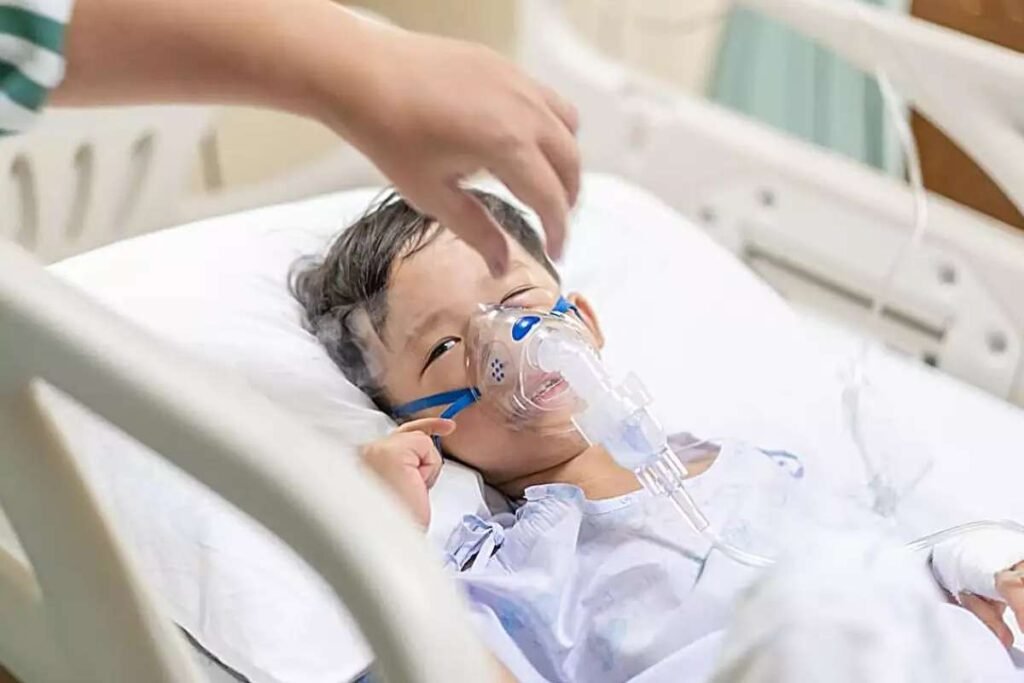Emergency room visits for babies suffering from Mycoplasma pneumonia, commonly known as Pneumoniae walking pneumonia cases , Pneumonia are increasing at alarming rates across the United States. According to data from the Centers for Disease Control and Prevention (CDC), these rates are now on par with cases among school-aged children, a trend that concerns doctors and public health officials.
Surge in Walking Pneumonia Cases Among Infants
The CDC’s National Syndromic Surveillance Program, which monitors pneumonia-related ER visits nationwide, reports that 7.6% of emergency department walking pneumonia cases in the week ending November 2 involved Mycoplasma Pneumoniae diagnoses in both infants aged 0–1 years and children aged 5–17 years. While cases in school-aged children typically outpace other age groups, the rates among infants have steadily increased throughout the fall without showing any signs of decline.
During the COVID-19 pandemic, cases of Mycoplasma pneumonia largely disappeared, likely due to public health measures such as masking and social distancing. CDC officials now believe this year’s surge may signal a return to pre-pandemic seasonal waves of the bacteria. However, the rising rates among infants, an age group previously thought to be less affected, present an unusual pattern.
Investigating the Unusual Trends
Dr. Adam Cohen, head of the CDC’s pneumonia branch, emphasized the importance of understanding whether this year’s wave is indicative of any changes in the bacteria itself or its presentation. He noted that such insights could help refine treatment and prevention strategies.
Across the U.S., all regions are seeing an increase in Mycoplasma pneumonia cases, with particularly high levels in three areas. The South, including Texas and its neighboring states Arkansas, Louisiana, Oklahoma, and New Mexico, is one hotspot. The Midwest, comprising Iowa, Kansas, Missouri, and Nebraska, is another. The third is the Northeast, covering New York and New Jersey.
Hospital Challenges and Severe Cases
At Golisano Children’s Hospital in New York, pediatric infectious disease specialist Dr. Jennifer Nayak described the current year as a particularly severe one for Mycoplasma pneumonia. She noted that approximately 25% of tests at the hospital’s microbiology lab are returning positive for the bacteria—an unusually high rate.
While most cases remain manageable, the hospital has seen an uptick in severe complications requiring hospitalization. These range from lung issues to more complex neurological symptoms, though such cases are still a minority. Nayak attributed the increase in severe cases to higher overall infection rates rather than changes in the bacteria itself.
Tracking and Treatment Challenges
Nayak pointed out that tracking Mycoplasma pneumonia infections has historically been inadequate. Since the infection is not a reportable disease to health departments, accurate comparisons to previous outbreaks are difficult. She emphasized the importance of testing in persistent or severe cases, as it helps families understand the infection and guides treatment decisions.
She also stressed that not all antibiotics are effective against Mycoplasma pneumonia. Common treatments like amoxicillin, often prescribed for ear infections or other community-acquired pneumonia, are ineffective against this specific bacteria.
Public Health Concerns
The New York State Department of Health has also observed a marked increase in Mycoplasma pneumonia cases in emergency rooms compared to previous years. While most cases do not require hospitalization, the spike in infections raises concerns about the strain on healthcare systems and the potential for complications in vulnerable populations, such as infants.
As public health officials and doctors work to understand and address the surge, the data underscores the importance of vigilance in monitoring and managing this illness, particularly among younger children who may face more severe outcomes.









